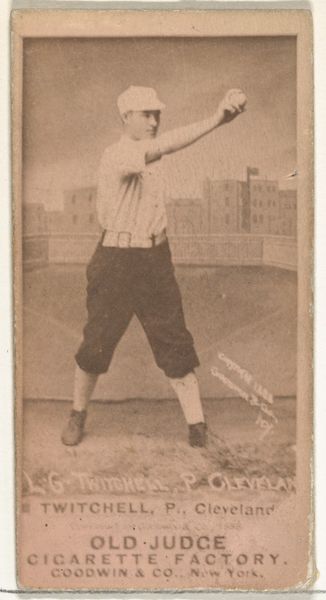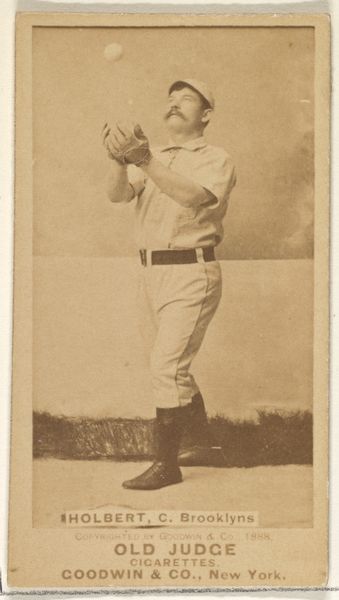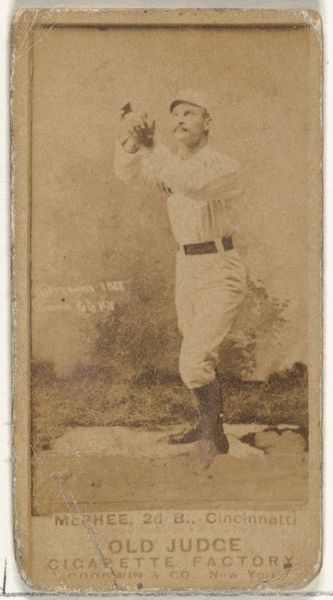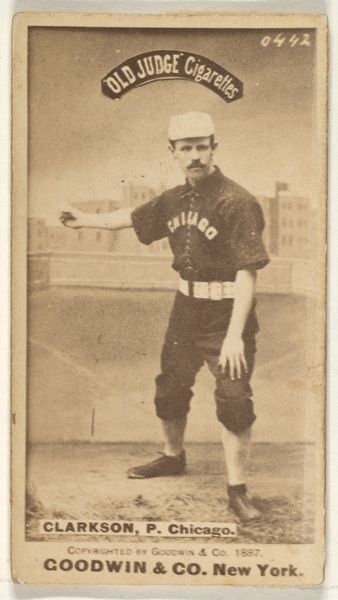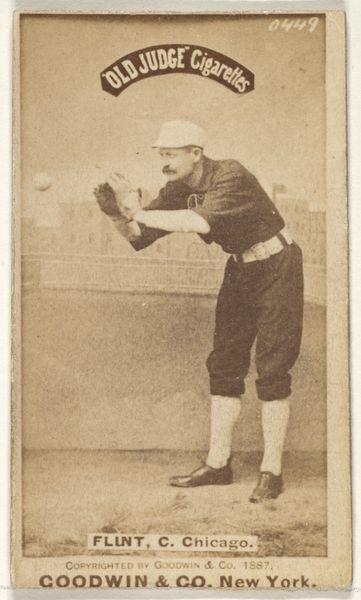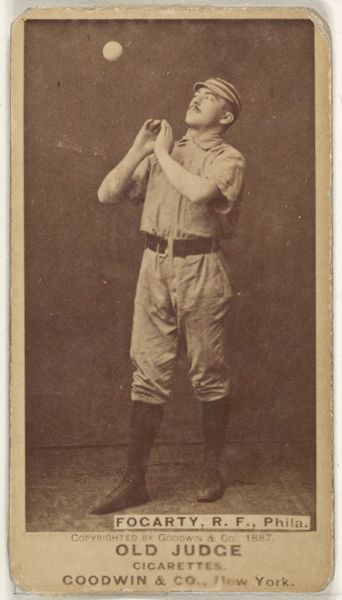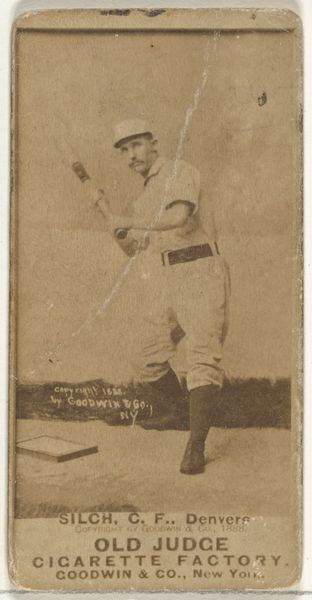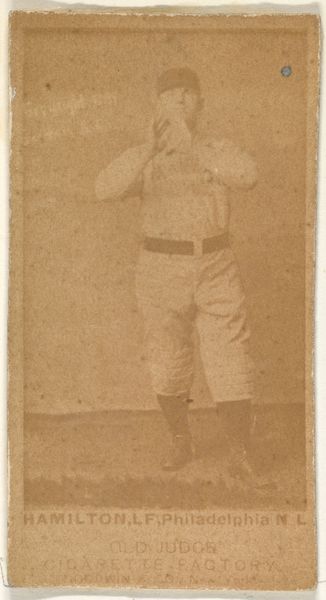
George Edward "Stump" Wiedman, Pitcher, Detroit Wolverines, from the Old Judge series (N172) for Old Judge Cigarettes 1887
0:00
0:00
print, photography, albumen-print
#
portrait
# print
#
baseball
#
photography
#
men
#
albumen-print
Dimensions: sheet: 2 11/16 x 1 3/8 in. (6.9 x 3.5 cm)
Copyright: Public Domain
Editor: Here we have "George Edward 'Stump' Wiedman, Pitcher, Detroit Wolverines," a baseball card from 1887 made by Goodwin & Company. It's an albumen print, and it’s got a fascinating sepia tone. What strikes me is the image's overt function as an advertisement – it's for cigarettes, after all. What else can you tell me about it? Curator: Well, let's consider the materiality of this "card". Albumen prints, as you mentioned, were created using a specific process, labor-intensive even then. Egg whites were coated on paper, creating the surface for the photographic emulsion. We see this mass-produced object not as high art, but as a key component in the emerging culture of celebrity and consumerism. Consider the cigarette company: they are essentially buying into, and thus fueling, baseball mania, turning a sportsman into a commodity. Editor: So, it's less about the art and more about how it was made and what it was used for? It feels… almost cynical. Curator: Exactly! Cynical might be too strong, but consider the players themselves. Were they benefiting equitably from this image circulation? Were the working-class men purchasing these cigarettes fully aware of the manipulative nature of linking sport and nicotine addiction? The baseball card becomes a powerful artifact ripe with materialist implications about the economics and cultural power structures of the late 19th century. We see not only a ball player but a nexus of labor, production, and promotion, commodifying both baseball and its audience. Editor: I never thought about it that way. The card suddenly seems less innocent. Curator: Precisely. This helps us see beyond the surface image. The "artwork" reveals complex social relationships in motion at the time. Editor: It's like each baseball card becomes a tiny, rectangular window into the economic and social fabric of the era. I will definitely do some digging on it.
Comments
No comments
Be the first to comment and join the conversation on the ultimate creative platform.
